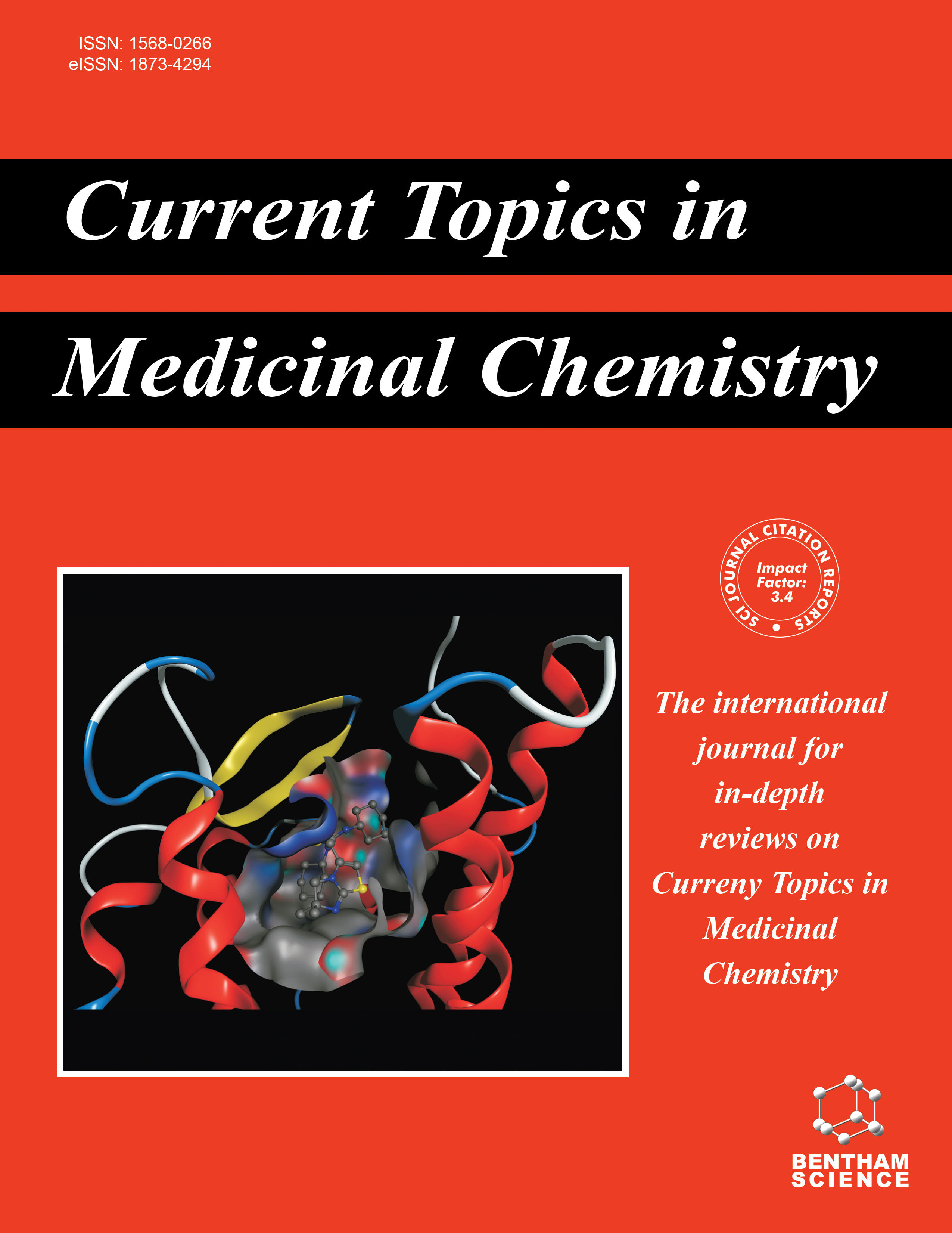- Home
- A-Z Publications
- Current Topics in Medicinal Chemistry
- Previous Issues
- Volume 16, Issue 22, 2016
Current Topics in Medicinal Chemistry - Volume 16, Issue 22, 2016
Volume 16, Issue 22, 2016
-
-
Telomerase as a Cancer Target. Development of New Molecules
More LessAuthors: D.L. Mengual Gomez, R.G. Armando, C.S. Cerrudo, P.D. Ghiringhelli and D.E. GomezTelomeres are the terminal part of the chromosome containing a long repetitive and noncodifying sequence that has as function protecting the chromosomes. In normal cells, telomeres lost part of such repetitive sequence in each mitosis, until telomeres reach a critical point, triggering at that time senescence and cell death. However, in most of tumor cells in each cell division a part of the telomere is lost, however the app Read More
-
-
-
Novel Approaches Towards Designing of Isoform-Selective Inhibitors Against Class II Histone Deacetylases: The Acute Requirement for Targetted Anticancer Therapy
More LessHistone deacetylases (HDACs) regulate gene expression by modulating chromatin architecture via histone hypoacetylation. They play a key role in regulating cellular processes including cell cycle arrest and apoptosis. Hyperactivity of HDACs plays a key role in tumour onset and progression making these enzymes as striking targets for anticancer drugs and therapy. Certain cancers are associated with upregulation of specific Read More
-
-
-
Artesunate as an Anti-Cancer Agent Targets Stat-3 and Favorably Suppresses Hepatocellular Carcinoma
More LessAuthors: M. Ilamathi, S. Santhosh and V. SivaramakrishnanBackground: Aberrant signal transducer and activator of transcription 3 (STAT-3) molecular signaling elicit hepatocellular carcinoma (HCC) in humans. Therefore, targeting STAT-3 is considered as an attractive option towards suppression of HCC in humans. Objective: Our objective is to identify a potential small molecule inhibitor that can specifically target STAT-3 and suppress HCC. Methods: In this study, we analyze a gr Read More
-
-
-
Nitroxyl (HNO): A Possible Strategy for Fighting Cancer
More LessAuthors: Mai E. Shoman and Omar M. AlyNitroxyl (HNO), the one electron reduced form of nitric oxide (NO), shows a very distinct chemistry and biology from that of NO. Chemical profile is characterized by reactions with thiols and thiol proteins such as aldehyde dehydrogenase, glyceraldehyde 3-phosphate dehydrogenase, caspases among others. Biological profile of HNO includes cardioprotective actions especially in cases of heart failure. This short review focuses o Read More
-
-
-
Kisspeptin Mediated Signaling in Cancer
More LessResearch over the years has gradually and sequentially highlighted contributory role of hypothalamic- based kisspeptin-signaling axis as a major positive modulator of the neuroendocrinological reproductive axis in mammals. However, a series of landmark studies provided convincing evidence of role of this signaling in regulation of cancer development and progression. It is becoming progressively more understandabl Read More
-
-
-
Oleuropein Mediated Targeting of Signaling Network in Cancer
More LessCancer is a multifaceted and genomically complex disease. Rapidly accumulating preclinical and clinical studies are emphasizing on wide ranging molecular mechanisms that underpin cancer development, progression and metastasis. Intratumor heterogeneity, loss of apoptosis, rapidly developing resistance against molecular therapeutics and off-target effects are some of the deeply studied resistance mechanisms. Dat Read More
-
-
-
P-Glycoprotein Mediated Multidrug Resistance Reversal by Phytochemicals: A Review of SAR & Future Perspective for Drug Design
More LessAuthors: Safiulla Basha Syed and Mohane Selvaraj CoumarA major impediment for cancer chemotherapy is the development of multidrug-resistance (MDR). Continuous use of chemotherapeutic drugs during cancer therapy induces the expression of PGlycoprotein (P-gp, MDR1), an ATP dependant transporter, which in turn reduces the intracellular accumulation of chemotherapeutic drugs leading to MDR. Extensive research over the years has identified several potential P-gp inhibito Read More
-
-
-
Synthesis, Cytotoxic Evaluation, Docking and QSAR Study of N-(4-Oxo- 2-(4-((5-Aryl-1,3,4-Thiadiazol-2-yl)Amino)Phenyl)Thiazolidin-3-yl) Benzamides as Antitubulin Agents
More LessAuthors: Chawla Amit, Chawla Payal, U.S. Baghel and Deep AakashIn the present study an efficient strategy for the synthesis of thiazole and thiadiazole derivatives was developed and clubbed together both of the substituted nucleus to form the analogues of combretastatin A-4 (tubulin polymerization inhibitors.). Synthesis was started by the reaction of substituted benzoic acid with thionyl chloride followed by the reaction with hydrazine, p-chloro benzaldehyde and thioglycolic acid to for Read More
-
Volumes & issues
-
Volume 25 (2025)
-
Volume 24 (2024)
-
Volume 23 (2023)
-
Volume 22 (2022)
-
Volume 21 (2021)
-
Volume 20 (2020)
-
Volume 19 (2019)
-
Volume 18 (2018)
-
Volume 17 (2017)
-
Volume 16 (2016)
-
Volume 15 (2015)
-
Volume 14 (2014)
-
Volume 13 (2013)
-
Volume 12 (2012)
-
Volume 11 (2011)
-
Volume 10 (2010)
-
Volume 9 (2009)
-
Volume 8 (2008)
-
Volume 7 (2007)
-
Volume 6 (2006)
-
Volume 5 (2005)
-
Volume 4 (2004)
-
Volume 3 (2003)
-
Volume 2 (2002)
-
Volume 1 (2001)
Most Read This Month
Article
content/journals/ctmc
Journal
10
5
false
en


